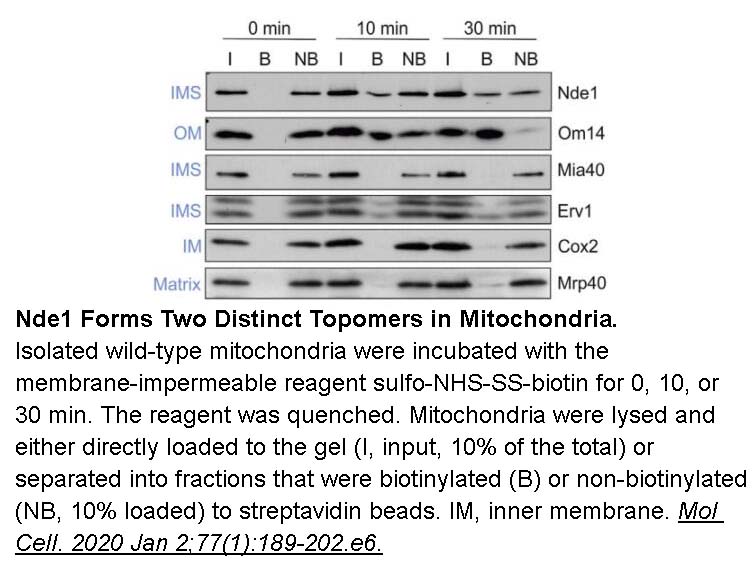- Home
- Protein & Immunology
- Protein Labeling
- Biotinylation Reagents
- Sulfo-NHS-SS-Biotin
Sulfo-NHS-SS-Biotin
Sulfo-NHS-SS-biotin(sulfosuccinimidyl-20(biotinamido)ethyl-1,3-dithiopropionate) is a long-chain cleavable amine-reactive biotinylation reagent. The presence of the negatively charged sulfonate group in the chemical structure of sulfo-NHS-SS-biotin makes it a water-soluble biotinylation reagent that can be directly added to aqueous reactions without prior dissolution of organic solvents. Although no prior dissolution is required, an aqueous stock solution of sulfo-NHS-SS-biotin must be prepared rapidly and used immediately in case of the occurrence of hydrolysis of the active ester. Sulfo-NHS-SS-biotin has been used to react with amine-containing proteins and other molecules forming a complex which further interacts with avidin or streptavidin probes and to purify targeted molecules using affinity chromatography on a column of immobilized avidin or streptavidin.
Reference
Bioconjugate Techniques , 2nd ed. By Greg T.Hermanson ?(Pierce Biotechnology, Thermo Fisher Scientific, Rockford, IL). ?Academic Press ?(an imprint of Elsevier): ?London, Amsterdam, Burlington, San Diego . 2008. ISBN 978-0-12-370501-3.
- 1. Guoli Song, et al. "SELENOK-dependent CD36 palmitoylation regulates microglial functions and Aβ phagocytosis." Redox Biol. 2024 Apr:70:103064. PMID: 38320455
- 2. Weixiang Bian, Hua Jiang, et al. "A spatially defined human Notch receptor interaction network reveals Notch intracellular storage and Ataxin-2-mediated fast recycling." Cell Rep. 2023 Jul 25;42(7):112819. PMID: 37454291
- 3. Jian Chen, Shizhen Qiu, et al. "Tuning charge density of chimeric antigen receptor optimizes tonic signaling and CAR-T cell fitness." Cell Res. 2023 May;33(5):341-354. PMID: 36882513
- 4. Asma B Salek, Emily T Claeboe, et al. "Spinophilin dependent regulation of GluN2B‐containing NMDAR‐dependent calcium influx, GluN2B surface expression, and cleaved caspase expression." Synapse 2023 Feb 04; PMID: 36738175
- 5. Jonathan Perr, Andreas Langen, et al. "RNA binding proteins and glycoRNAs form domains on the cell surface for cell penetrating peptide entry." bioRxiv. September 05, 2023.
- 6. Neuza Domingues, Steve Catarino, et al. "Cx43 promotes exocytosis of damaged lysosomes through actin remodelling." Research Square. December 21st, 2022.
- 7. Shaoqin Zheng, Jiahui Lin, et al. "Aberrant Cholesterol Metabolism and Wnt/β‐Catenin Signaling Coalesce via Frizzled5 in Supporting Cancer Growth." Adv Sci (Weinh). 2022 Oct;9(28):e2200750. PMID: 35975457
- 8. Angela L Whittsette, Ya-Juan Wang, et al. "The Endoplasmic Reticulum Membrane Complex Promotes Trafficking And Function Of GABAA Receptors." iScience. 2022 Jul 13;25(8):104754. PMID: 35938049
- 9. Meng Wang, Edmund Cotter, et al. "Pharmacological activation of ATF6 remodels the proteostasis network to rescue pathogenic GABAA receptors." Cell Biosci. 2022 Apr 27;12(1):48. PMID: 35477478
- 10. Zheng Niu, YiLing Zhang, et al. "Decreased NHE3 activity in intestinal epithelial cells in TGEV and PEDV-induced piglet diarrhea." Vet Microbiol. 2021 Dec;263:109263. PMID: 34749283
- 11. Jobe L. Ritchie, Jennifer L. Walters, et al. "Basolateral amygdala corticotropin-releasing factor receptor type 1 regulates context-cocaine memory strength during reconsolidation in a sex-dependent manner." Neuropharmacology. 2021 Dec 1;200:108819. PMID: 34610289
- 12. Zhenhui Song, Tao Yan, et al. "Reduced activity of intestinal surface Na+/H+ exchanger NHE3 is a key factor for induction of diarrhea after PEDV infection in neonatal piglets." Virology. 2021 Nov;563:64-73. PMID: 34464882
- 13. Yang Y, Yu Q, et al. "Decreased NHE3 activity and trafficking in TGEV-infected IPEC-J2 cells via the SGLT1-mediated P38 MAPK/AKt2 pathway." Virus Res. 2020;280:197901. PMID: 32070687
- 14. Saladi S, Boos F, et al. "The NADH Dehydrogenase Nde1 Executes Cell Death after Integrating Signals from Metabolism and Proteostasis on the Mitochondrial Surface." Mol Cell. 2019 Oct 18. pii: S1097-2765(19)30732-4. PMID: 31668496
- 8. Sheridan J.S. Carrington. "Differential Glycosylation of the Inwardly Rectifying Potassium Channel Kir7.1 by G protein-coupled Receptors." Vanderbilt University. 2019.
- 16. Carrington S, Hernandez C, et al. "G protein-coupled receptors differentially regulate glycosylation and activity of the inwardly rectifying potassium channel Kir7.1." J Biol Chem. 2018 Sep 26. pii: jbc.RA118.003238. PMID: 30257863
- 17. Brasher MI, Martynowicz DM, et al. "Interaction of Munc18c and Syntaxin4 facilitates invadopodium formation and extracellular matrix invasion of tumour cells." J Biol Chem. 2017 Aug 10. pii: jbc.M117.807438. PMID: 28798239
??Protein labeling—biotinylate antibodies to facilitate immobilization, purification or detection
??Cell surface labeling—do not penetrate the plasma membrane, biotinylates only surface proteins of whole cells
??Amine-reactive—reacts with primary amines (-NH2), such as lysine side-chains, or the N-terminal-amine
??Cleavable—disulfide bond in spacer arm allows the biotin label to be removed using reducing agents such as DTT
??Soluble—charged sulfo-NHS group increases reagent water solubility compared to ordinary NHS-ester compounds
??Medium length—spacer arm is 24.3 angstroms; it consists of the native biotin valeric acid group extended by a 7-atom chain
| Storage | Store at -20°CThe product is not stable in solution, please dissolve it immediately before use. |
| M.Wt | 606.7 |
| Cas No. | 325143-98-4 |
| Formula | C19H27N4NaO9S4 |
| Synonyms | Biotin disulfide N-hydroxysulfosuccinimide ester |
| Solubility | ≥30.33 mg/mL in DMSO; <2.68 mg/mL in EtOH; <2.74 mg/mL in H2O |
| Chemical Name | sodium;1-[3-[2-[5-[(3aS,4S,6aR)-2-oxo-1,3,3a,4,6,6a-hexahydrothieno[3,4-d]imidazol-4-yl]pentanoylamino]ethyldisulfanyl]propanoyloxy]-2,5-dioxopyrrolidine-3-sulfonate |
| SDF | Download SDF |
| Canonical SMILES | C1C(C(=O)N(C1=O)OC(=O)CCSSCCNC(=O)CCCCC2C3C(CS2)NC(=O)N3)S(=O)(=O)[O-].[Na+] |
| Shipping Condition | Small Molecules with Blue Ice, Modified Nucleotides with Dry Ice. |
| General tips | We do not recommend long-term storage for the solution, please use it up soon. |
| Biotinylation method [1]: | |
|
Sample |
468/EV cells and 468/uPAR cells. |
|
Preparation method |
Soluble in water, DMSO or DMF. |
|
Reaction Conditions |
1 mg/ml, 15minutes on ice |
|
Applications |
Cells in monolayer culture (1.5 × 106) were washed three times with ice-cold PBS and then treated with sulfo-NHS-SS-biotin (1mg/mL) for 15 minutes on ice. Biotinylation reactions were terminated with 100 mmol/L glycine in PBS. After washing with PBS, cell extracts were prepared in radioimmunoprecipitation assay (RIPA) buffer (20 mmol/L sodium phosphate, 150 mmol/L NaCl (pH 7.4), 1% NP40, 0.1% SDS, and 0.5% deoxycholic acid) with protease inhibitor cocktail. Biotinylated membrane proteins were precipitated with streptavidin-sepharose. Proteins were eluted with SDS sample buffer, resolved by SDS-PAGE, electrotransferred to polyvinylidene difluoride (PVDF) membranes, and probed with primary antibodies. |
|
References: [1]. Minji Jo, Boryana M. Eastman, Drue L. Webb, et al. Cell Signaling by Urokinase-type Plasminogen Activator Receptor Induces Stem Cell-like Properties in Breast Cancer cells . Cancer Res, 2010;70:8948-8958 |
|
| Description | Sulfo-NHS-SS-Biotin is a water-soluble, NHS-ester biotinylation reagent | |||||
| Targets | ||||||
| IC50 | ||||||
Quality Control & MSDS
- View current batch:
Chemical structure

Related Biological Data
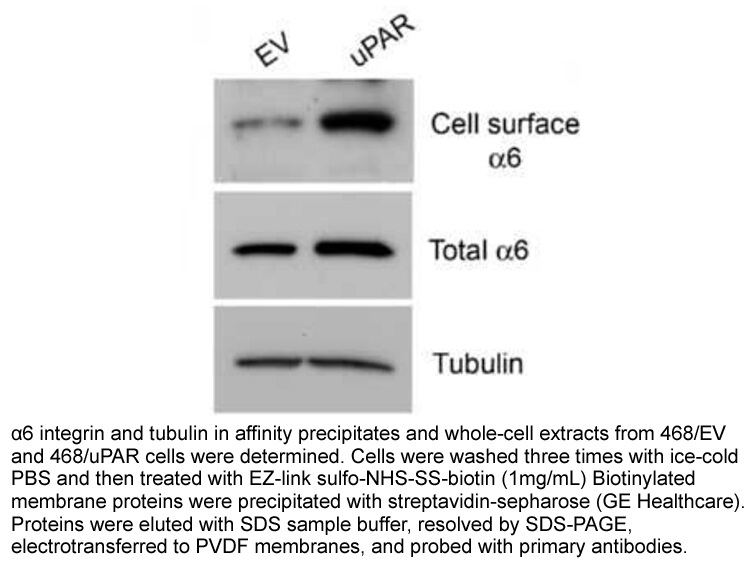
Related Biological Data
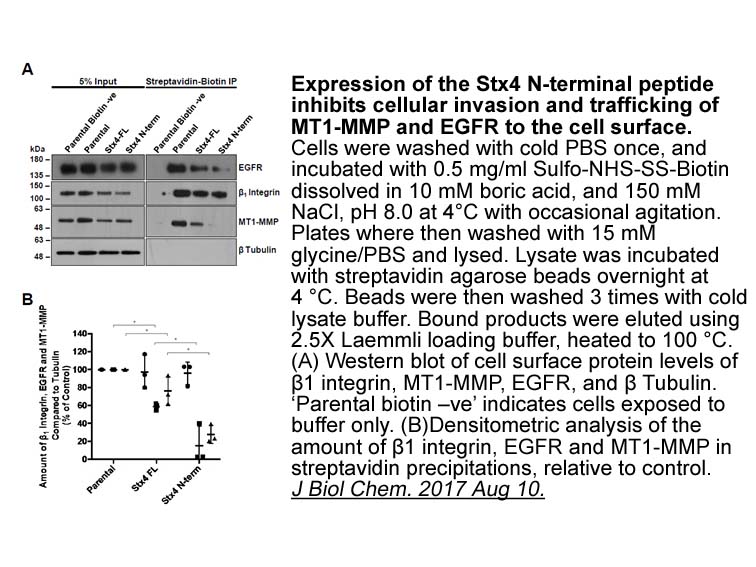
Related Biological Data
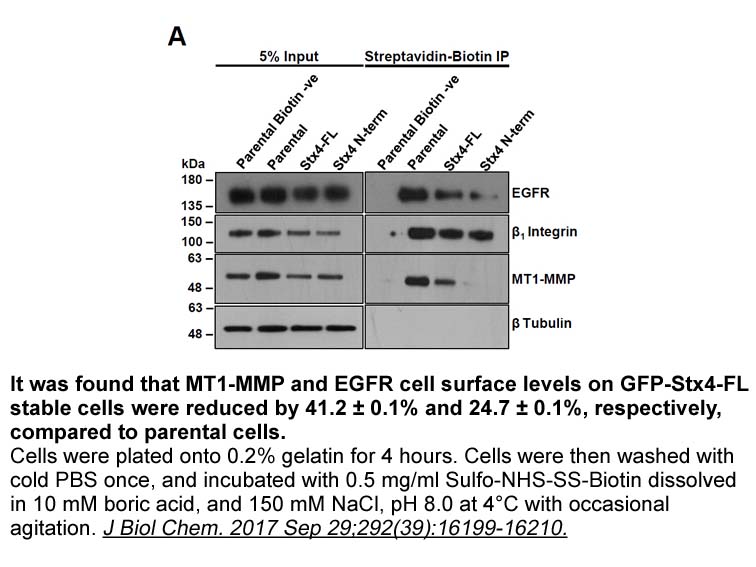
Related Biological Data
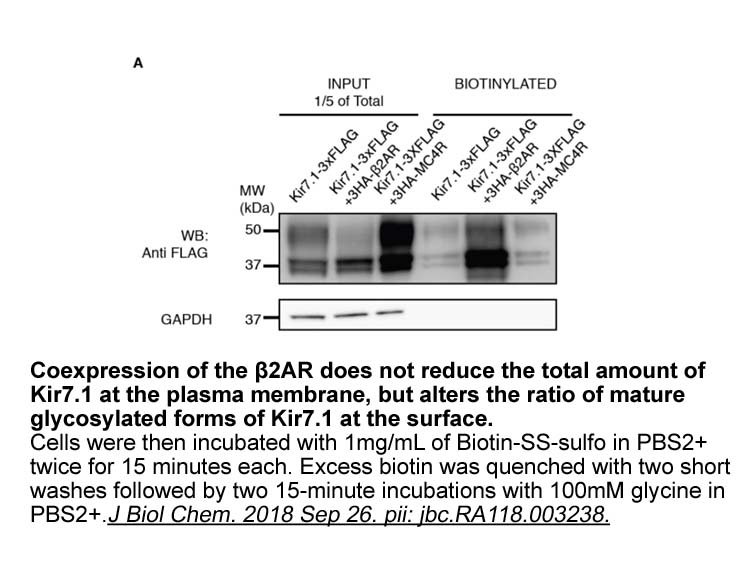
Related Biological Data
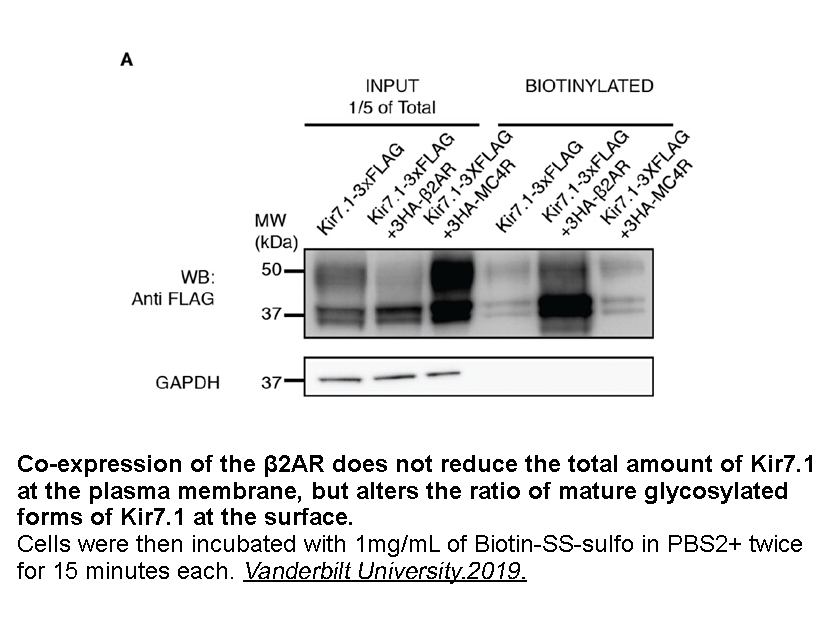
Related Biological Data
